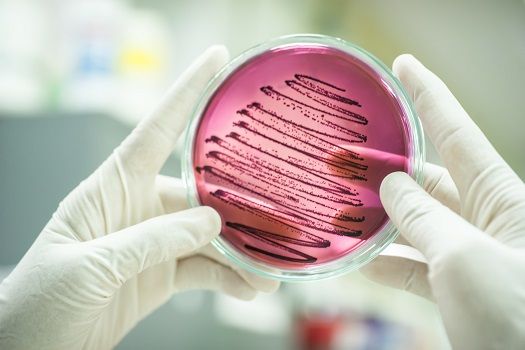Article
Synthetic Peptide Could Limit Drug-Resistant Bacteria Function
Author(s):
The protein functions by regulating bacteria’s gene expression, thereby affecting its flagella motion, protein consumption, and production of biofilm to attach to hosts.

Researchers have found a synthetic protein that could functionally shut down a bacteria and prevent it from gaining resistance from drugs.
A laboratory-produced protein has shown the ability to affect the machinations of Pseudomonas aeruginosa (P. aeruginosa), a common pathogen found in patients with cystic fibrosis or compromised immune systems. The bacteria causes soft tissue-based diseases and burns.
Though P. aeruginosa is naturally resistant to various penicillins and cephalosporins and frequently mutates or acquires genes to build resistance to antibiotics, the protein was capable of preventing the bacteria from moving, eating, attaching to hosts and, in some cases, mutating.
The researcher’s peptide functions by regulating bacteria’s gene expression, thereby affecting its flagella motion, protein consumption, and production of biofilm to attach to hosts. It also disables the bacteria’s ability to resist antibiotics.
Led by Megan Gribble Lloyd, PhD, of the Department of Microbiology and Immunology at the State University of New York (SUNY) Upstate Medical University, the study showed great potential in response to the growing drug-resistant bacteria issue. P. aeruginosa was recently identified on the World Health Organization’s “Global Priority List” as a critical pathogen and high priority for antibiotic research and development.
That said, there are no real clinical results to report yet. The protein’s capability has only been documented in a lab setting thus far.
Lloyd noted the vitality of “unique and different approaches” to antibiotic-resistant bacteria.
“It has been a constant struggle between the development of resistance and creating stronger antibiotics to continue treating infections,” Lloyd said. “We hope that identifying new approaches or targets, such as our synthetic peptide, will help create treatments which preclude development of resistance by the bacteria.”
With the US Center for Disease Control and Prevention recently reporting that increased antibiotic resistance in bacteria such as P. aeruginosa is stifling hospital-acquired infection therapy, novel treatments for tougher bacteria is becoming a necessity.
Last month, a research team from the University of Warwick and The Francis Crick Institute found underlying chemical actions of common antibiotic D-cycloserine which allowed it to inhibit bacteria enzymes and disable its ability to build walls.
Study author David Roper, PhD, MRC, BSc, told MD Magazine at the time that penicillin drugs work in a larger complexity than their original design intended, and that other therapies should be similarly analyzed.
“Certainly we should understand at a higher level how antibiotics work to tease out the biology and chemistry that may lead to new drugs, but also to understand how resistance to these drugs might arise so that we can avoid this or at least make it less likely,” Roper said.
Related Coverage >>>
NIH Launches Study to Find Best ART Regimen for Pregnant HIV Patients





